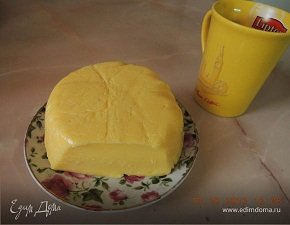
My stories about health and healthy nutrition. Topic 2.
The history of this topic. The roots of the genealogical tree to which I belong go back to the glorious tribes of the ancient Germanic tribes. They were tall and warlike people. Perhaps some of my ancestors fought with the Romans ... but I'm not talking about that. Later, these tribes adopted Catholic Christianity, and during the reformation of 1517, inspired by Martin Luther's ideas of personal spiritual responsibility to God, but not satisfied with the depth of reforms, a small group organized a separate movement in Christianity - Anabaptism (crossbreds). The Anabaptists suffered harassment from both Catholics and Protestants. In the middle of the seventeenth century, some of them, moving away from persecution, substantiated their settlements in the swamps of northern Germany. The Dutch, the British, also found shelter there. At the end of 1762, Empress Catherine invited everyone to resettle on the free lands of the Russian Empire. The Germans, due to their ability to work and a fairly high level of education, were given special privileges in the choice of lands. They mostly inhabited the chernozem lands of the Volga and South-Western Ukraine, the Crimea. My ancestors moved to the Kuban. For many centuries, physical labor, a healthy diet, a healthy lifestyle were the norm of life. Directly my ancestors on the reforms of Stolypin moved to Siberia, to the Altai. My family is hereditary farmers and cattle breeders. There are nine children in the family. My father is a farmer. All of us have worked physically since childhood. They ate natural products. And, in fact, the theoretical aspects of the topic of healthy nutrition, therapeutic physical culture, we worried little, because. it was the practice of our life. But already now, having lived in the city for only five years, I begin to feel that something is sorely lacking.
Morning before school. The next time I checked the refrigerator for traces of organic contents and with a sigh the bay with boiling water the contents of a bright package with a suspicious inscription "doshyrak", I indulge myself with memories ...
Rural morning. Running barefoot on the dew, and at the same time driving the cows to a village camp ... cemetery ... pah! pasture !, greeting the first ray of the sun with a salutary cry, join the complete collection of Karamzin's works - History of the Russian ... Khm! ... to the full meeting of the family at the table! Breakfast - it's called. In its structure is organically fit fresh homemade cheese from whole cow milk. Yes Yes! The same as our ancestors ate thousands of years ago.
Cottage cheese
Cottage cheese is a fermented milk product obtained by fermenting milk with subsequent removal of whey.
Cottage cheese is a unique product, one of the richest sources of high-grade protein. In natural milk, there are fermented bacteria. As a result of chemical reactions, which, in fact, they conduct, the bonds of protein compounds are created. In various dairy products, these are different proteins, in which the bonds are of different stability. It is curd that consists of 25% pure protein - casein. This protein is easily absorbed by the human body. Scientists have experimentally established that the curd is secreted several times less than gastric juice, hydrochloric acid and enzymes than for fermented and whole milk. Cottage cheese is used in diets for the treatment of obesity, heart disease, liver, atherosclerosis and hypertension, because it improves fat metabolism. Curd contains a large amount of calcium, also in easily digestible form, as well as vitamins B1, B2, PP, C and others. The product contributes to the formation of hemoglobin in the blood, improves the recovery ability of the nervous system (and this in our turbulent time - oh, how important!), Strengthens bone and cartilaginous tissue.
The content of protein, fat and carbohydrates, as well as vitamins in curds, depends directly on the fat content of the milk from which it is made. We used both skimmed (fat-free) and whole milk. From such breakfasts the body feels vigorous, there is no weight in the stomach, which would interfere with work and normal life in general, energy over the edge! And yet - it's just delicious! For desserts we added fresh berries to cottage cheese, which we ourselves grew - strawberries, strawberries, currants, raspberries, gooseberries (incidentally, for us it was a discovery - to use gooseberries for these purposes, the fact is that jam and compotes are not obtained from it, and ate it we only fresh). In autumn, winter and spring, the same berries are added to the curd, prudently frozen by Mummy and sisters, as well as various jam from the cellar or raisins and fruits from the store. In our diet, other foodstuffs prepared with the addition of cottage cheese, fried curd cakes, casseroles, vareniki, pancakes, pies, desserts, and also homemade cheese, which I prescribe at the end of my short creative work, constantly appeared in our diet:
Homemade cheese
- In 1-3 liters of whole milk, add 1 kg of cottage cheese
- Grill on low heat until boiling
- Strain the cottage cheese
- Add 0.5 teaspoons of soda, 2 eggs, 50 gr. Butter, salt, greens, spices to taste
- Fast stir and transfer to a pan
- Warm until melting cottage cheese
- Cool
there is still a good recipe for cottage cheese! very tasty